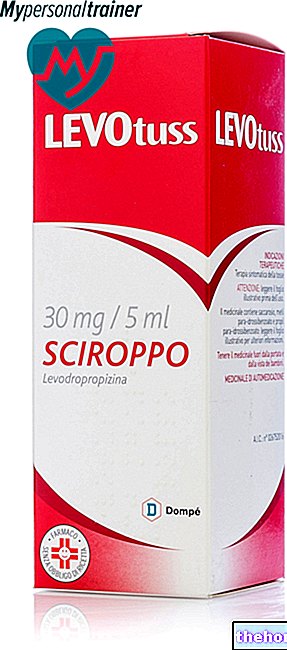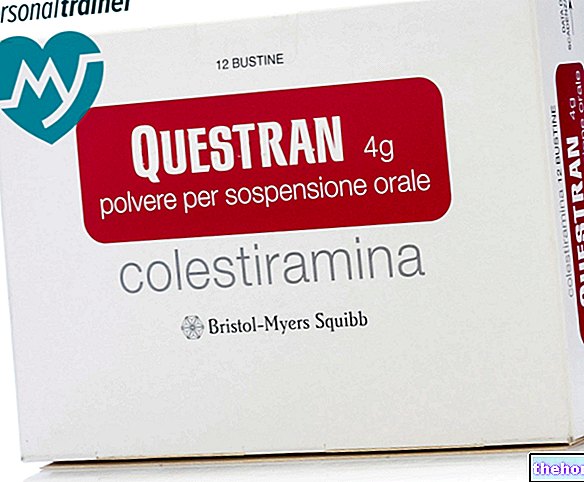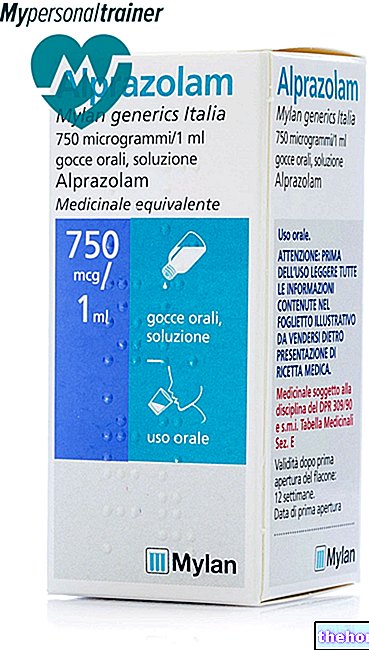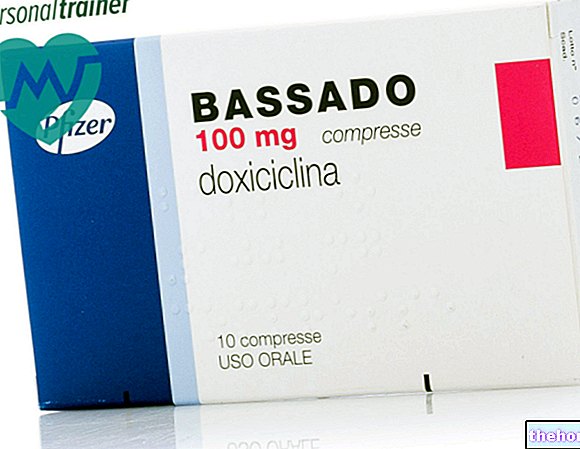Active ingredients: Diosmin
DAFLON 500 mg film-coated tablets
Indications Why is Daflon used? What is it for?
Symptoms attributable to venous insufficiency; states of capillary fragility.
Pharmacodynamic properties
Pharmacotherapeutic group: Vasoprotector and venotonic.
ATC code: C05CA03
Pharmacology
The product carries out its activity:
- at the level of the veins, decreasing their distensibility and reducing stasis;
- at the level of microcirculation, normalizing permeability and increasing capillary resistance.
Clinical Pharmacology
The pharmacological properties of the product have been confirmed in humans by double-blind studies conducted with methods that have made it possible to object and quantify its activity on venous hemodynamics.
Dose / effect relationship:
The existence of statistically significant dose / effect relationships was established on the basis of venous plethysmographic parameters: capacity, distensibility and emptying time. The best dose-effect ratio was obtained with 2 tablets.
Venotonic activity:
Increase in venous tone: strain gauge plethysmography shows a decrease in venous emptying times.
Microcirculatory activity
The activity evaluated from double-blind controlled studies is statistically significant compared to placebo.
In patients with capillary fragility, capillary resistance controlled by angiosterrometry increases.
Clinic
The therapeutic activity of the drug, in the treatment of chronic functional and organic venous insufficiency of the lower limbs, is demonstrated by double-blind controlled studies.
Pharmacokinetic properties
In man after oral administration of carbon14-labeled diosmin, it is observed that:
- excretion is essentially fecal while urinary excretion represents, on average, 14% of the quantity administered;
- the elimination half-life is 11 hours, the product is extensively metabolised, as demonstrated by the presence of different acid phenols in the urine.
Contraindications When Daflon should not be used
Hypersensitivity to the active substance or to any of the excipients listed in section 6.1.
Precautions for use What you need to know before taking Daflon
No precautions for use.
Interactions Which drugs or foods can change the effect of Daflon
No interaction studies have been performed.
Warnings It is important to know that:
Pregnancy and breastfeeding
Pregnancy
The safety of the drug in pregnancy has not been determined, therefore it is advisable not to administer the product during pregnancy.
Pregnancy
In the absence of data on milk excretion, treatment should be avoided during lactation
Effects on ability to drive and use machines
No studies have been conducted to evaluate the effect of the flavonoic fraction on the ability to drive or use machines.
Dosage and method of use How to use Daflon: Dosage
2 film-coated tablets per day (1 at noon and 1 in the evening) at mealtimes, even in venous insufficiency of the haemorrhoidal plexus.
Overdose What to do if you have taken too much Daflon
No cases of overdose have been reported.
Side Effects What are the side effects of Daflon
The following adverse effects or reactions have been reported and ranked under the following frequency: very common (> 1/10); common (> 1/100, 1 / 1,000, 1 / 10,000,
Nervous system disorders
Rare: dizziness, headache, malaise
Gastrointestinal disorders
Common: diarrhea, dyspepsia, nausea, vomiting
Uncommon: colitis
Not known: abdominal pain.
Skin and subcutaneous tissue disorders
Rare: rash, itching, urticaria.
Not known: edema of the face, lips, eyelid; Quincke's edema.
Disorders of the blood and lymphatic system
Not known: thrombocytopenia.
Reporting of suspected adverse reactions
Reporting of suspected adverse reactions occurring after authorization of the medicinal product is important as it allows for continuous monitoring of the benefit / risk balance of the medicinal product. Healthcare professionals are asked to report any suspected adverse reactions via the national reporting system. "address https://www.aifa.gov.it/content/segnalazioni-reazioni-avverse.
Expiry and Retention
Period of validity
3 years.
Special precautions for storage
This medicinal product does not require any special storage conditions.
Composition and pharmaceutical form
List of excipients
Sodium carboxymethyl starch, microcrystalline cellulose, gelatin, glycerin, hypromellose, sodium lauryl sulfate, yellow iron oxide E172, red iron oxide E 172, titanium dioxide, macrogol 6000, magnesium stearate, talc.
Nature and contents of the container
The film-coated tablets are packaged in thermoformed blisters consisting of a PVC / aluminum coupling and each containing 15 tablets. The blisters are enclosed in a cardboard box which also contains the package leaflet.
Packs containing 15, 30 or 60 film-coated tablets.
Not all pack sizes may be marketed
Source Package Leaflet: AIFA (Italian Medicines Agency). Content published in January 2016. The information present may not be up-to-date.
To have access to the most up-to-date version, it is advisable to access the AIFA (Italian Medicines Agency) website. Disclaimer and useful information.
01.0 NAME OF THE MEDICINAL PRODUCT
DAFLON 500 MG COATED TABLETS
02.0 QUALITATIVE AND QUANTITATIVE COMPOSITION
Each film-coated tablet contains:
Active principle
purified flavonoic fraction, micronized 500 mg
consisting of:
diosmin 450 mg
flavonoids expressed in 50 mg hesperidin
For the full list of excipients, see section 6.1
03.0 PHARMACEUTICAL FORM
Film-coated tablets
04.0 CLINICAL INFORMATION
04.1 Therapeutic indications
Symptoms attributable to venous insufficiency; states of capillary fragility.
04.2 Posology and method of administration
2 film-coated tablets per day (1 at noon and 1 in the evening) at mealtimes, even in venous insufficiency of the haemorrhoidal plexus.
04.3 Contraindications
Hypersensitivity to the active substance or to any of the excipients.
04.4 Special warnings and appropriate precautions for use
None.
04.5 Interactions with other medicinal products and other forms of interaction
Do not report.
04.6 Pregnancy and lactation
Pregnancy
The safety of the drug in pregnancy has not been determined, therefore it is advisable not to administer the product during pregnancy.
Feeding time
In the absence of data on milk excretion, treatment should be avoided during lactation
04.7 Effects on ability to drive and use machines
Not relevant.
04.8 Undesirable effects
The following adverse effects or reactions have been reported and ranked under the following frequency: very common (≥ 1/10); common (≥ 1/100,
Nervous system disorders
Rare: dizziness, headache, malaise
Gastrointestinal disorders
Common: diarrhea, dyspepsia, nausea, vomiting
Uncommon: colitis
Skin and subcutaneous tissue disorders
Rare: rash, itching, urticaria.
Not known: isolated cases of edema of the face, lips, eyelid. Exceptionally Quincke's edema.
Disorders of the blood and lymphatic system
A few cases of thrombocytopenia, the frequency of which is unknown, have been reported in the post-marketing setting.
04.9 Overdose
No cases of overdose have been reported.
05.0 PHARMACOLOGICAL PROPERTIES
05.1 Pharmacodynamic properties
Pharmacotherapeutic group: Vasoprotector and venotonic.
ATC code: C05CA03
-Pharmacology
The product carries out its activity:
- at the level of the veins, decreasing their distensibility and reducing stasis;
- at the level of microcirculation, normalizing permeability and increasing capillary resistance.
- Clinical Pharmacology
The pharmacological properties of the product have been confirmed in humans by double-blind studies conducted with methods that have made it possible to object and quantify its activity on venous hemodynamics.
Dose / effect relationship:
The existence of statistically significant dose / effect relationships was established on the basis of venous plethysmographic parameters: capacity, distensibility and emptying time.
The best dose-effect ratio was obtained with 2 tablets.
Venotonic activity:
Increase in venous tone: strain gauge plethysmography shows a decrease in venous emptying times.
Microcirculatory activity
The activity evaluated by double-blind controlled studies, is statistically significant in comparison
placebo.
In patients with capillary fragility, capillary resistance controlled by angiosterrometry increases.
- Clinic
The therapeutic activity of the drug in the treatment of chronic functional venous insufficiency e
organism of the lower limbs, is demonstrated by double-blind controlled studies.
05.2 Pharmacokinetic properties
In man after oral administration of carbon 14-labeled diosmin, it is observed that:
- excretion is essentially fecal while urinary excretion represents, on average, 14% of the quantity administered;
- the elimination half-life is 11 hours,
the product is extensively metabolised, as demonstrated by the presence of different acid phenols in the urine.
05.3 Preclinical safety data
The preclinical data have little clinical relevance in the light of the vast experience acquired with the use in humans of the active ingredient contained in the medicinal product.
06.0 PHARMACEUTICAL INFORMATION
06.1 Excipients
Sodium carboxymethyl starch, microcrystalline cellulose, gelatin, glycerin, hypromellose, sodium lauryl sulfate, yellow iron oxide E172, red iron oxide E 172, titanium dioxide, macrogol 6000, magnesium stearate, talc.
06.2 Incompatibility
Not relevant.
06.3 Period of validity
3 years.
06.4 Special precautions for storage
This medicinal product does not require any special storage conditions.
06.5 Nature of the immediate packaging and contents of the package
- The film-coated tablets are packaged in thermoformed blisters consisting of a PVC / aluminum coupling.
The blisters are enclosed in a cardboard box which also contains the package leaflet.
- Packaging: box of 30 film-coated tablets.
06.6 Instructions for use and handling
No special instructions.
07.0 MARKETING AUTHORIZATION HOLDER
LES LABORATOIRES SERVIER
22, Rue Garnier
92200 - Neuilly sur Seine - France
Representative for Italy:
SERVIER ITALIA S.p.A.
Via Luca Passi, 85
00166 Rome.
08.0 MARKETING AUTHORIZATION NUMBER
AIC No. 023356025
09.0 DATE OF FIRST AUTHORIZATION OR RENEWAL OF THE AUTHORIZATION
Renewal date: 03/2011
10.0 DATE OF REVISION OF THE TEXT
09/2011




























